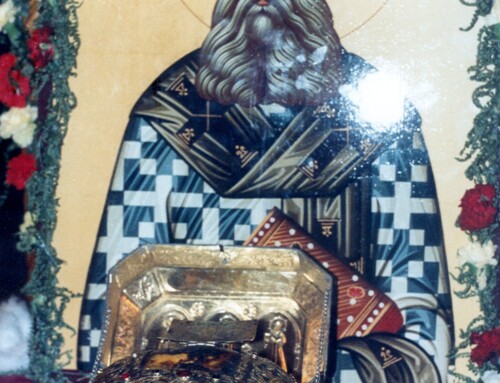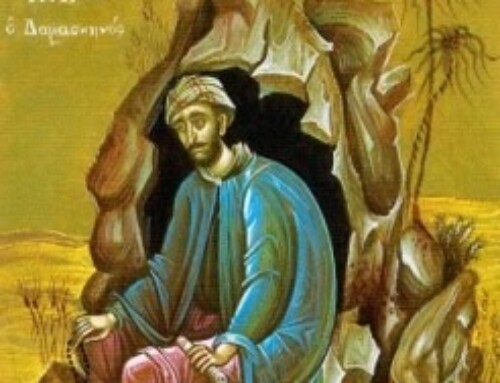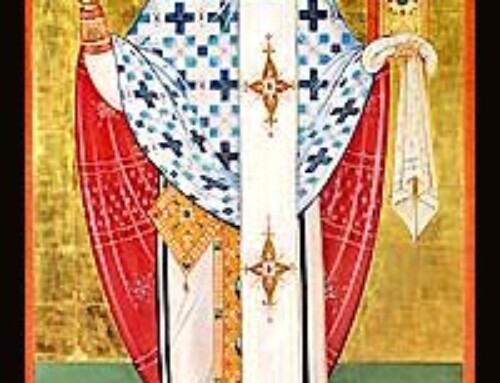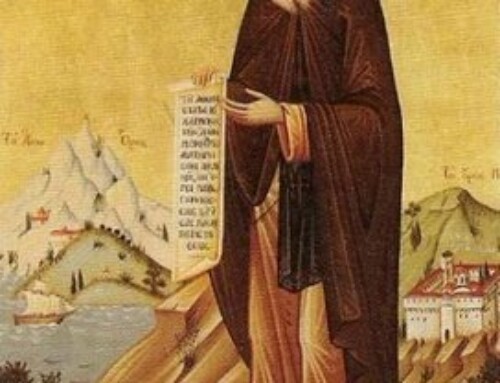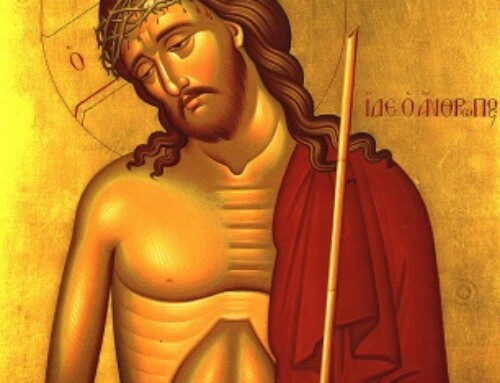Word Magazine June 1960 Page 7
THE MYSTICAL BODY OF CHRIST
A Brief Synopsis
By Father John Newcombe
Beckley, W. Va.
The Mystical Body of Christ is one, living reality, born of the Redemption wrought for us by the Incarnate Word. It is that Society formed of Christ and the Church, of which One is the Head, the other the Body.
The Mystical Body — the Holy Church — is a fact. It is also a Mystery. So it is called mystical. It is a fact of divine revelation. God has revealed it through His Divine Son. “I am the vine, you are the branches; he that abideth in Me, and I in him, the same beareth much fruit for without Me you can do nothing.” (John xv. 5).
This means a life, our life in Christ. We are incorporated with Him in His Mystical Body. This is a fundamental truth of our faith; it rests on the firm basis of revelation; it is intimately connected with our service of God and with our outlook on the spiritual life. To refuse to consider the meaning of incorporation with Christ, or to follow out this truth in its various implications would at least betoken some timidity and want of faith in God, seeing that, what He has revealed, and what the living voice of the Church commands, and what has been preached by the greatest Saints to simple and learned alike, cannot be a snare or a pitfall for us.
Man’s Nature
It will not be amiss to recapitulate the main facts on which our life is built, both in the order of nature and in that of grace. Man is made up of body and soul. He is conscious of the gravitating tendency of the flesh and of the impulse of the spirit. He is aware of contradictory elements in his composition, of discordant principles at war with him. Yet all along there is a dominant conviction that he is a single unit, an individual, a person alone and apart; and that it is for him to rule his higher and lower natures, the beast and the bird of paradise that have been so astonishingly caged together in his clay.
St. Augustine once told his congregation at Hippo: it was free to them to be beasts or angels; beasts, if they followed the instincts of their blood alone; angels, if they guided their lives by the dictates of conscience. Moreover, from the very outset of his attempts at self-analysis, man is faced by the inexplicable mystery of life. More actually than his reflection stares back at him through the mirror, he stares at the spiritual, indwelling substance of his soul, and finds himself compelled to bow down before the mystery which his own frame enshrines.
“Now,” he says quite simply and humbly, “if the energy I feel within me, if the light in my eyes and the thrill in my veins pass my understanding, if my natural life must be a mystery to me, how can I hope to measure or understand that life of grace of which Christ speaks, that divine Life which is His life and which His Church imparts?”
Nature and Grace
Working up then to the first half of a great truth, we are led to admit a dualism in our nature. Not only are we, as men, made up of body and soul, but as Christians we live by a double life of nature and of grace. We have in fact two elements and live two lives. This is one side of our proposed equation of identity. Formulating the other side, which is its counterpart, we say that to every Christian the Church presents herself with a similar dualism in her nature. She bases the whole strength of her appeal for his allegiance and his love on the grounds of a common identity.
She as much as says to him: “You have perhaps been used to think of me as a divinely ordered system, with a hierarchy and seven Sacraments, and devotions, and a calendar of Feasts and Fasts, the guardian of God’s Revelation and the Pledge of His continued presence among His children — and you are right — I am all this; but I am more. I am like yourself both body and spirit; like you I am an external organism, yet nourished by an inward and supernatural life; like you I am both human and divine.
Our Lord Himself gathers up into this message of identity the moral teaching of His whole life and His last calm and collected prayer on earth is that this sweet mystery of union with Him may be verified in ourselves: “that we may all be one, as Thou Father in Me, and I in Thee” (JOHN xvii. 21).
The Physical and the Mystical Christ
Jesus Christ, Who was born of the Virgin Mary (the Theotokos) and lived and died for us, was true Man and true God. As Man He is in Heaven and in the Holy Sacrament of the Altar. As Man He is the physical Christ. He is still the same physical Christ when He comes to us under the image of the Vine, of which we are the branches, of the Bridegroom forming One Body with His elect bride the Church, of the Head of that Body to which we belong as members, but with this difference: that here we form part of Himself, living with His life submerged in His personality, identified with Him. The physical Christ died for us; the mystical Christ lives in us; the physical Christ reconciled us to His Eternal Father; the mystical Christ makes us One with Him in His Church. In a word, the mystical Christ is the absorption of the Church into Christ in such a way that the Church completes her Head and is completed by Him.
I am the Vine; you are the branches…He that abideth in Me and I in Him, the same beareth much fruit, for without Me you can do nothing. . . If anyone abide not in me, he shall be cast forth as a branch and shall wither.
Briefly, the substance of Christ’s severance means death. The One, Holy, Pure and Eternal Body of Christ is His Holy Church — His Church and not man-made churches. Organic union with Christ is union with His Eternal Visible and Teaching Church, severance from it is severance from the source of life itself.

